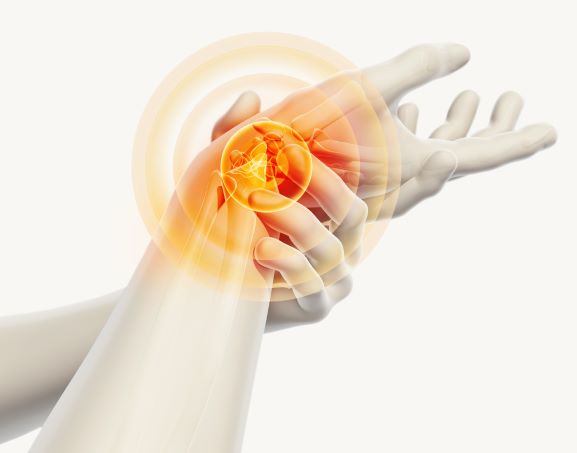
Jan 27, 2022
Paingone
National Headache Foundation Shines Spotlight on How Health Insurance Companies Contribute to Suffering of Migraine Patients
Treating migraine headaches has always been difficult, particularly for patients suffering from chronic or daily migraines. A common problem is a continual struggle for patients to get their health insurers to cover the often costly medications that bring them pain relief. The National Headache Foundation (NHF) advocates for these patients, calling on insurers to do away with the “step therapy” approach to approving medication.
Step therapy refers to requiring patients to try a wide range of treatments already in wide use before being approved for treatment with new and more expensive therapeutics. Patients have to try cheaper, older drugs that aren’t as effective before being allowed to “step up” to newer medications.
Thomas Dabertin, Executive Director of NHF, explained, “For too long, migraine patients have been treated differently than others with medical issues as it relates to access to prescription medications. Specifically, clinicians are often forced to use outdated prescription drugs in a stepwise approach to all patients, without considering the needs of the individual patient.”
“Unfortunately, the current care models adopted by payers have not kept pace with the many advances in treatment. As a result, clinicians are using older medications, some of which are not even designed for the specific treatment of migraine, even though new migraine-specific therapies now exist.”
In the last several years, neuromodulation devices and medications called CGRPs (calcitonin gene-related peptides) that block migraine-inducing proteins have profoundly impacted those suffering from chronic migraine. These medications can cost thousands of dollars a year, so health insurers require that patients try older, less effective drugs first, sometimes for months, before approving newer treatments. During that time, patients often suffer needlessly from recurring, chronic migraines.
The NHF stated, “For patients who are highly impacted or disabled by migraine, clinicians should not be directed to deliver outdated models of care that apply a predetermined algorithm in a stepwise approach to all patients, without considering the needs of the individual patient, and that encourage the use of older preventive drugs when targeted and migraine-specific therapies now exist.”
Acupuncture May Be Effective Carpal Tunnel Syndrome Treatment
Carpal tunnel syndrome (CTS) usually occurs in patients who repetitively use their wrists and hands for small-movement tasks such as typing. Over time, the small, bony sheath that holds the median nerve running from the wrist to the hand, puts pressure on the nerve. This leads to pain and inflammation, often accompanied by tingling, numbness, and weakness.

Doctors usually recommend non-invasive treatments such as pain relievers, ice, and physical therapy for individuals with CTS. An alternative option that has been getting a lot of attention in recent months is acupuncture with or without other treatments.
According to studies in 2020 and 2021, acupuncture brought relief to most patients with mild to moderate carpal tunnel syndrome. For these individuals, acupuncture treatments for four weeks resulted in improved strength and reduction of the fingers’ pain, tingling, and numbness. The improved comfort lasted for about three months after treatments stopped in most situations.
It is theorized that acupuncture changes how the brain perceives and processes pain signals. The insertion of slender needles into the skin encourages blood flow to the area, reducing inflammation and triggering the body’s release of endorphins to combat pain.
Combined Treatment Options May be Best Bet for Chronic Pain Patients
A recent overview of chronic pain treatments and their efficacy was published at Medical News Today. The piece advocated for the use of combined therapies to treat patients suffering from chronic pain that has lasted three or more months. Because chronic pain affects physical and emotional well-being as well as the ability to do day-to-day tasks and remain employed, doctors are now taking a multi-pronged approach to chronic pain relief.
Doctors are now using two or more complementary treatments to alleviate chronic pain in their patients. The results show that it is more effective to add a different therapy (such as biofeedback or physical therapy) instead of increasing prescription pain relievers. Among the pain management regimens used with success are physical therapy, acupuncture, massage, biofeedback, acupuncture, yoga, and tai chi.
Pain Facts: Chronic pain usually falls into one of four categories: neuropathic, back, joint, and headaches. In the United States, 80% of adults will have back pain at some point. More than 4 million adults suffer from chronic daily migraines. This sometimes leads to job loss or inability to perform everyday tasks unless treated. Chronic neuropathic pain affects between 3 and 17 percent of adults. Joint pain due to arthritis is one of the most prevalent sources of chronic pain, with over 15 million adults experiencing severe joint pain.
Is Paingone helping your patients and your practice?
Tell us your success story.
A robust retail strategy is essential to growing your practice.
You only have so many hours a week available for appointments. The fastest way to increase your bottom line is to incorporate profitable products that generate repeat business and build your reputation as a medical professional. That’s where Paingone comes in.
Contact us below to learn more about our products, wholesale pricing and how Paingone can benefit your practice.

